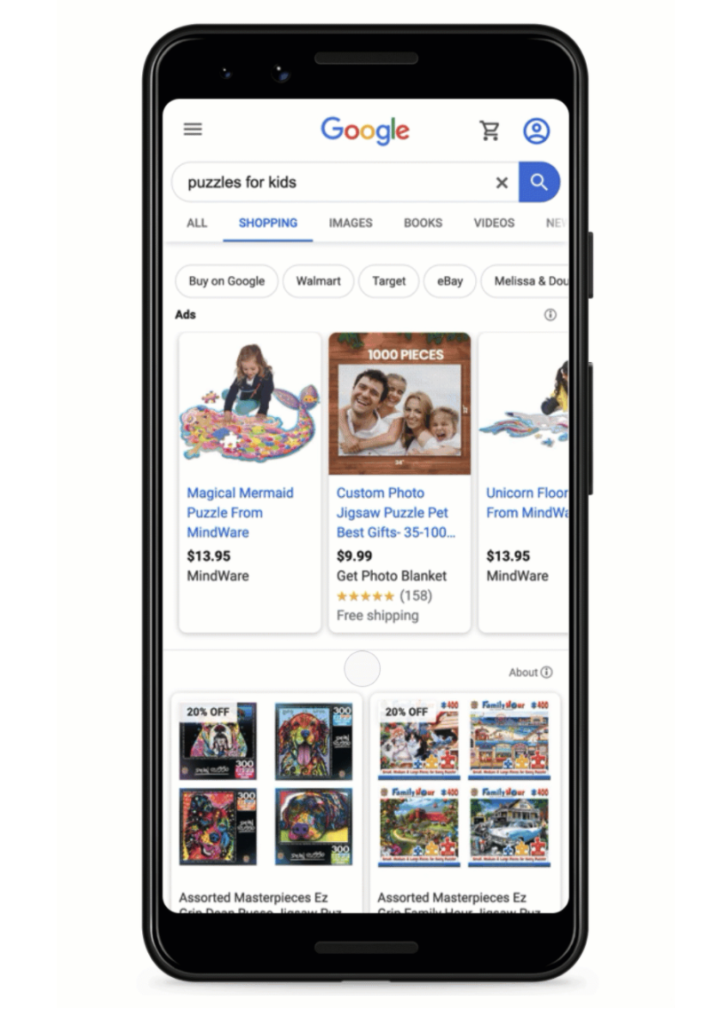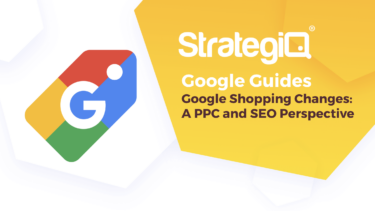As we are all aware, the current pandemic is leaving very few aspects of day-to-day life untouched. Nearly all businesses and sectors have been in some way affected – retail is one of those that has been hit the hardest.
With physical shops having to close, the value of online sales has never been so evident for those that already have a presence and infrastructure. For those that didn’t have this route to market in place it has (in many cases) been a mad scramble to create a digital shop front just to keep their businesses alive.
“What we’re seeing is that there are many, many retailers and small businesses that stand ready to serve shoppers, but don’t yet have a great way to connect with them digitally,”
Bill Ready, Google’s President of Commerce, told The Verge
This week’s news
It is not all doom and gloom, as long as you can be flexible and agile to the current situation. With that in mind, our dear friend Google has made one the most significant changes to the main SERP (Search Engine Results Page) in recent years – specifically to enable retailers and advertisers to list products in the shopping feed, FOR FREE.
But let’s not get ahead of ourselves, this isn’t a revolutionary idea from the ever caring tech giant… it is in essence just reverting back to a model that was the original home of product listings.

Working in digital marketing is all about staying agile and reactive to changes, whether that’s the move to the refreshed Google Ads interface and the GDPR updates of 2018, the announcement of the retirement of ‘rel=next rel=prev’ in 2019, as well as the regular core algorithm updates, you certainly can’t rest on your laurels in digital marketing. Is this just another to add to the timeline of changes?
People will point to this being an attempt by Google to take back some of the market share that leading online marketplaces had accrued over the years, particularly Amazon. However, regardless of the motivations behind the move, this does present a number of opportunities for retailers of all sizes.
What could this mean for SEO & PPC?
SEO – Initial thoughts

Drawing too many conclusions before we see it ‘out in the wild’ is difficult, but without wishing to adopt an ‘it depends’ answer, there are a few things that we do know. There will, undoubtedly, be benefits to those early adopters, who look to benefit from the first mover advantage and upload their product inventories (particularly when interest and intrigue is at its highest) before we eventually see all retailers, big and small, making the transition.
When eCommerce utopia used to consist of visibility across Paid Search and Google Shopping, coupled with a strong organic listing for key eCommerce terms, this now brings ‘organic shopping’ into the mix too.
This could start a new normal for eCommerce SEOs, who I think will see this as another opportunity to get their client’s product feed in front of clients, as long as this doesn’t significantly change the layout of SERPs in future. Look at the uproar that the addition of favicons caused!
Testing is the name of the game in SEO but whether these stores see an impact on the bottom line immediately remains to be seen.
Oli Hearsum – Search Strategist
PPC – Initial thoughts

My overarching takeaway is the simplicity and ease in which established retailers should be able to take advantage of this shift in focus. Any brand that has already run Shopping campaigns previously should have a ready-made product feed that they can utilise, which is only strengthened by Google working with a number of leading e-commerce platforms. As people start to upload their feeds, this will quickly become a crowded space and the need to couple this organic visibility with the paid ads, will be further enhanced.
It is worth noting that paid shopping ads will still achieve prioritised placements over the organic listings, so it is a little unknown how large a piece of the pie a non-paying advertiser will be able to obtain.
On another slightly more skeptical note (come on, it’s Google) – it’s worth remembering that Google is still recovering PR-wise from the €2.4 billion euro fine issued by the EU in 2017 for manipulating the search results. Announcements like this do help to gloss over the relatively recent negative mainstream coverage that the service was subject to.
Google is saying that this was a change that has been on the cards for a while, but the recent outbreak around the world has accelerated the launch (or re-launch!). This is certainly a move that will be welcomed by small to medium retailers all around the world, along with the agencies that support them with their eCommerce strategies.
Charlie Taylor – Paid Marketing Manager
So, what can I be doing now?
The number one priority would be to revisit your product feeds and have them ready to go for when it does get rolled out in the UK.
Similarly, Ecommerce best practices still remain and are essential in order for your product feed to stand out in this soon-to-be crowded marketplace. These include;
- High quality product photography
- A number of product reviews (acting as a trust signal)
- Detailed and engaging product descriptions
- Sufficient stock levels to cope with this extended reach (where possible)
Conclusion
Whilst this is initially being rolled out in the US, it will soon become available to all. Our team will be keeping abreast of any further updates and be helping our clients and partners leverage opportunities with initiative this when it becomes available in the UK.
So watch this (market) space and if you’d like to explore what this could mean for your business do get in touch.


















